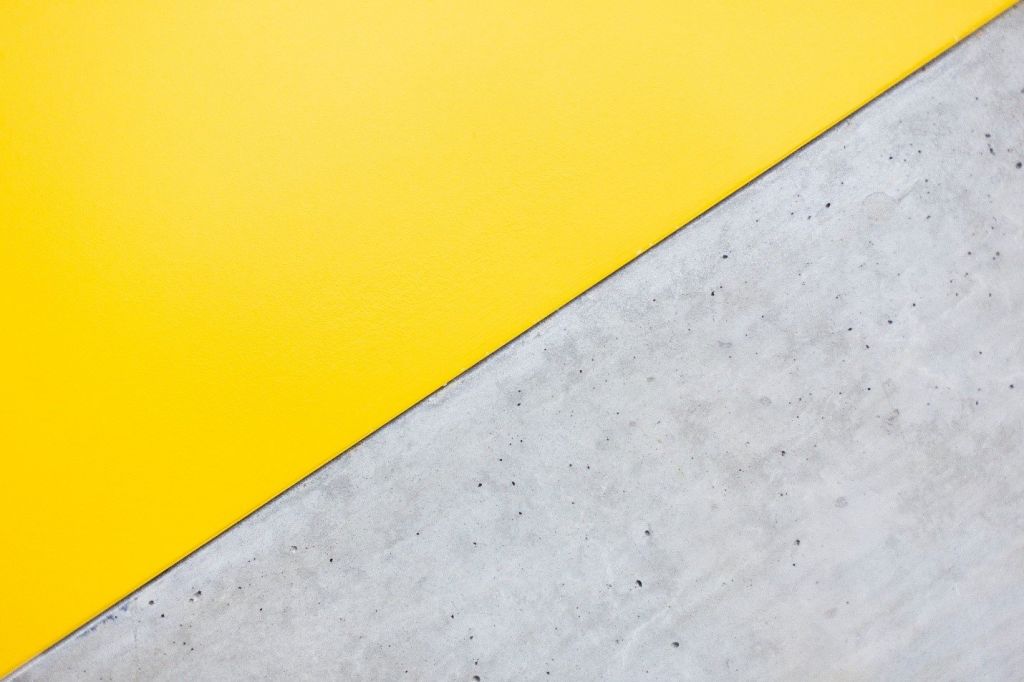If you’ve got a boring concrete slab that you’d like to liven up, one of the fastest and easiest ways is to simply add some color. With the right tools, you can take a plain, gray slab and transform it into a colorful floor, reminiscent of marble or any number of other materials. Or, you can add some high contrast, vibrant colors that will make it look like nothing else on earth.
When browsing colors for a concrete stain, you have a number of different options. Concrete can actually be colored using three different methods: dyes, stains, or pigments. Let’s briefly look at these three and then we’ll focus in on stains and discuss the different colors for concrete stains you might consider.
Concrete Dyes
Concrete can be dyed using an incredibly fine powder that’s mixed with water or another solvent (depending on the manufacturer) and applied to the surface of the concrete. Dyes are nonreactive, which means they don’t interact chemically with the concrete.
Instead, they quickly penetrate into the concrete, and they stay there for a long time. Though, the downside to that is that their penetration is so fast that there’s little room for error. One of the other disadvantages to dyes is the fact that they’re not UV stable which means they’re recommended for indoor use only.
Concrete Pigments
Like dyes, pigments can be applied by mixing a powdered iron oxide with a solvent like water and put on the concrete that is to be colored. However, pigments can also be applied without a solvent, if done so before the concrete is poured. When concrete is colored this way, it ensures that the whole batch receives the same hue. However, pigments don’t offer the wide range of colors that dyes and stains do. That’s why, if you’re looking for vibrant colors, you should be considering colors for concrete stains rather than pigments.
Concrete Stains
Concrete stains fall into three large categories: penetrating, acid, and film-forming.
Penetrating stains move deep into the pore of the concrete, bonding with it. They generally offer long-lasting colors for concrete stains. And they come in a wide assortment of different shades and hues. You’ll normally find them as a water-based product that can easily be mixed with other colors to create a nearly infinite number of colors. Keep in mind, though, that their transparency means that they will not hide flaws in your concrete. Cracks, chips, and any other problem areas will show through.
Acid-based stains react chemically with the concrete, adding texture as well as color and creating a marble-like effect. Unfortunately, acid-based stains will not give you the variety of colors that penetrating and film-forming stains provide. They’re largely limited to earth tones such as grays, browns, greens, and light blues. Their other main disadvantage is the fact that they are more dangerous and require greater precautions to apply.
Film-forming stains are like paint in that you simply apply a layer to the top of your concrete. They come in a diverse assortment of shades, hues, and tints. No matter what color you’re going for, you can get it with a film-forming stain.
Available Colors for my Concrete Stain?
If you’re looking for vibrant colors that are easy to apply, penetrating stains and film-forming stains offer limitless options. If you want a more marble-like appearance and are satisfied with plainer, earth tones, then you’ll likely want to go with an acid-based stain.
If you’d like to take a look at a large sample of potential colors for concrete stains, look no further than this link.

